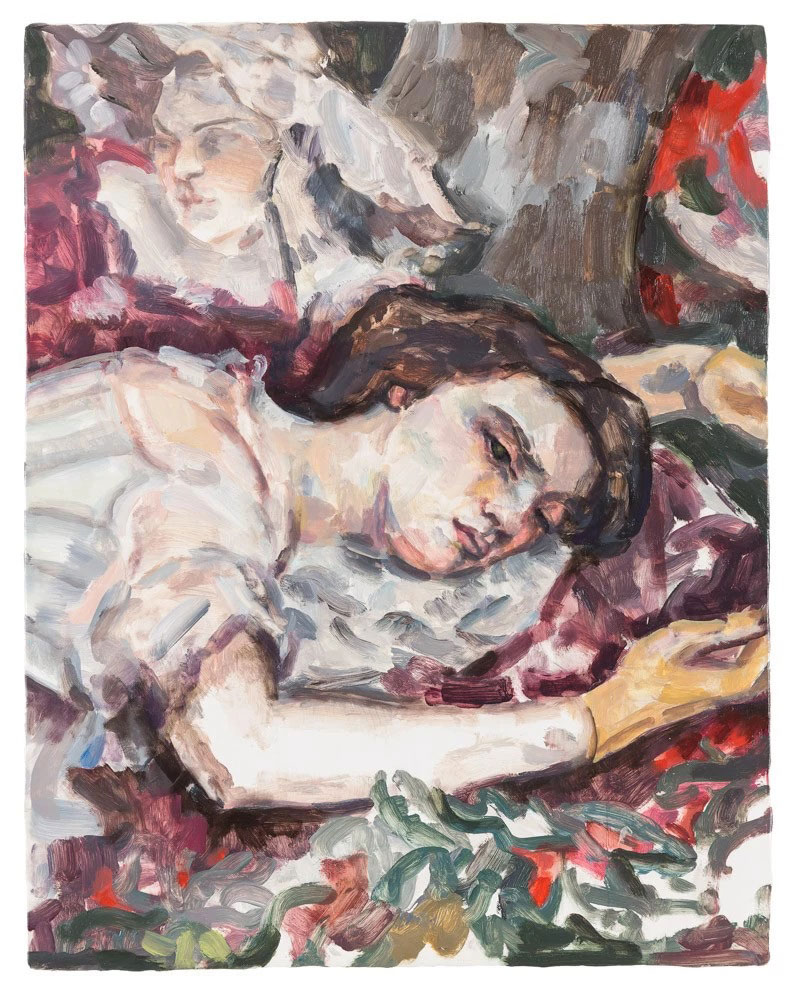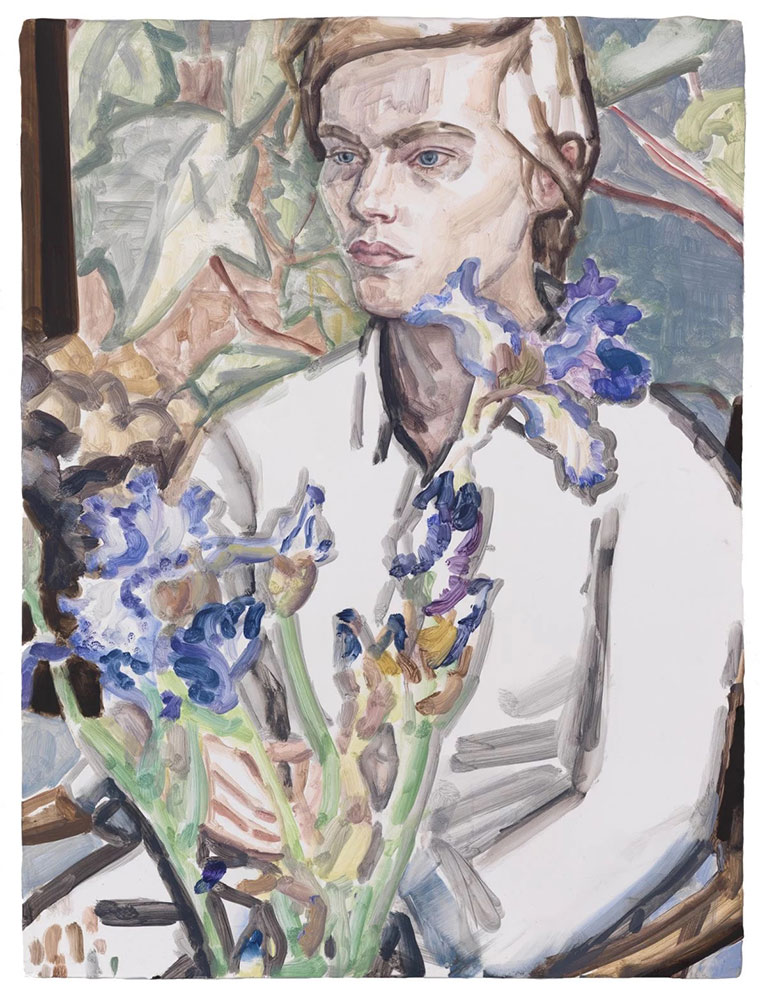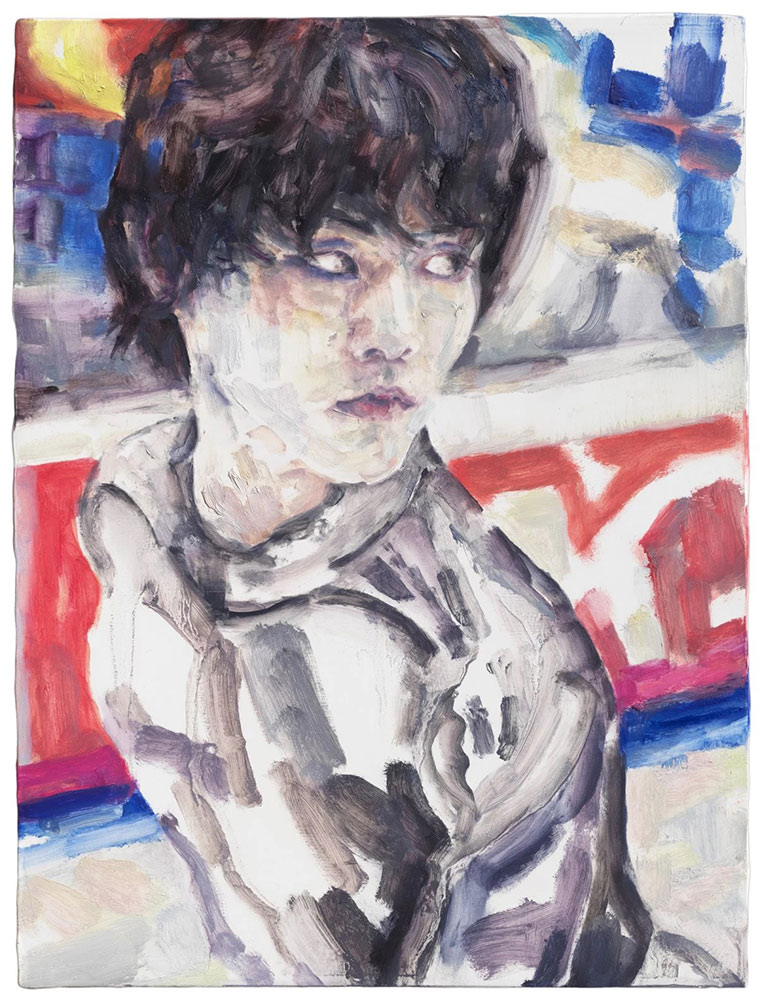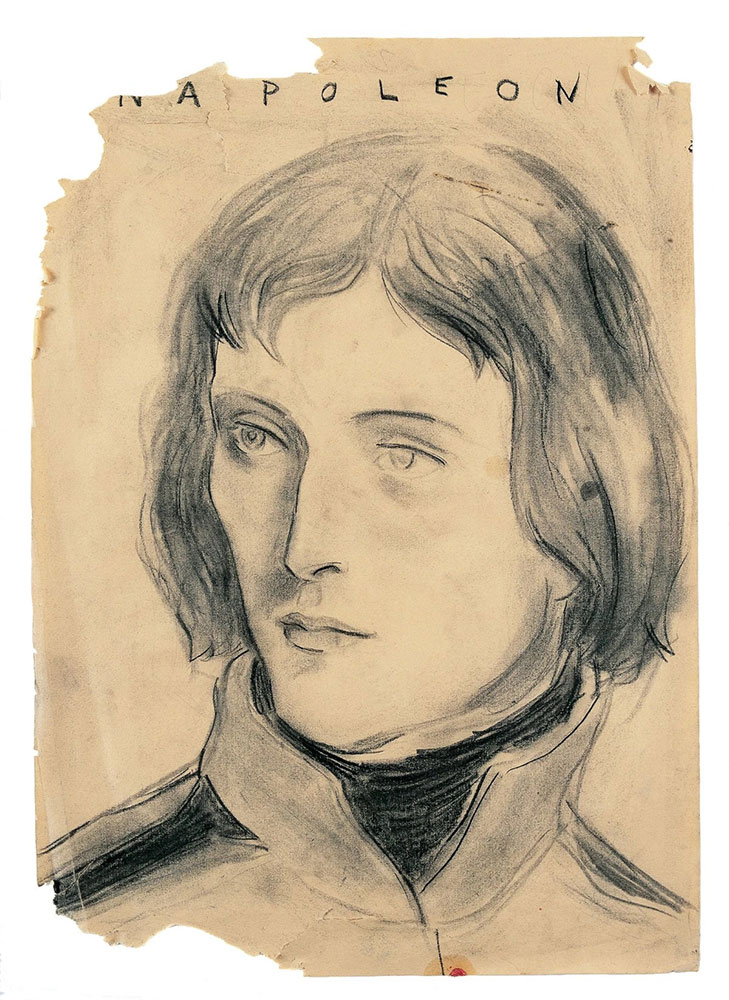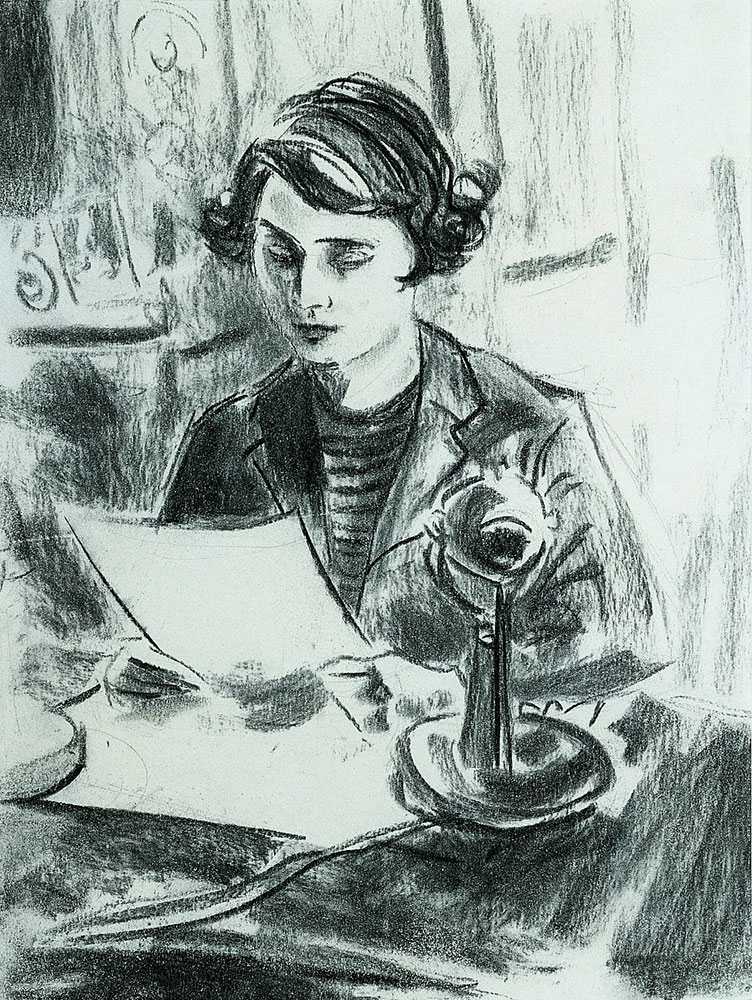ART CITIES: Paris-Elizabeth Peyton
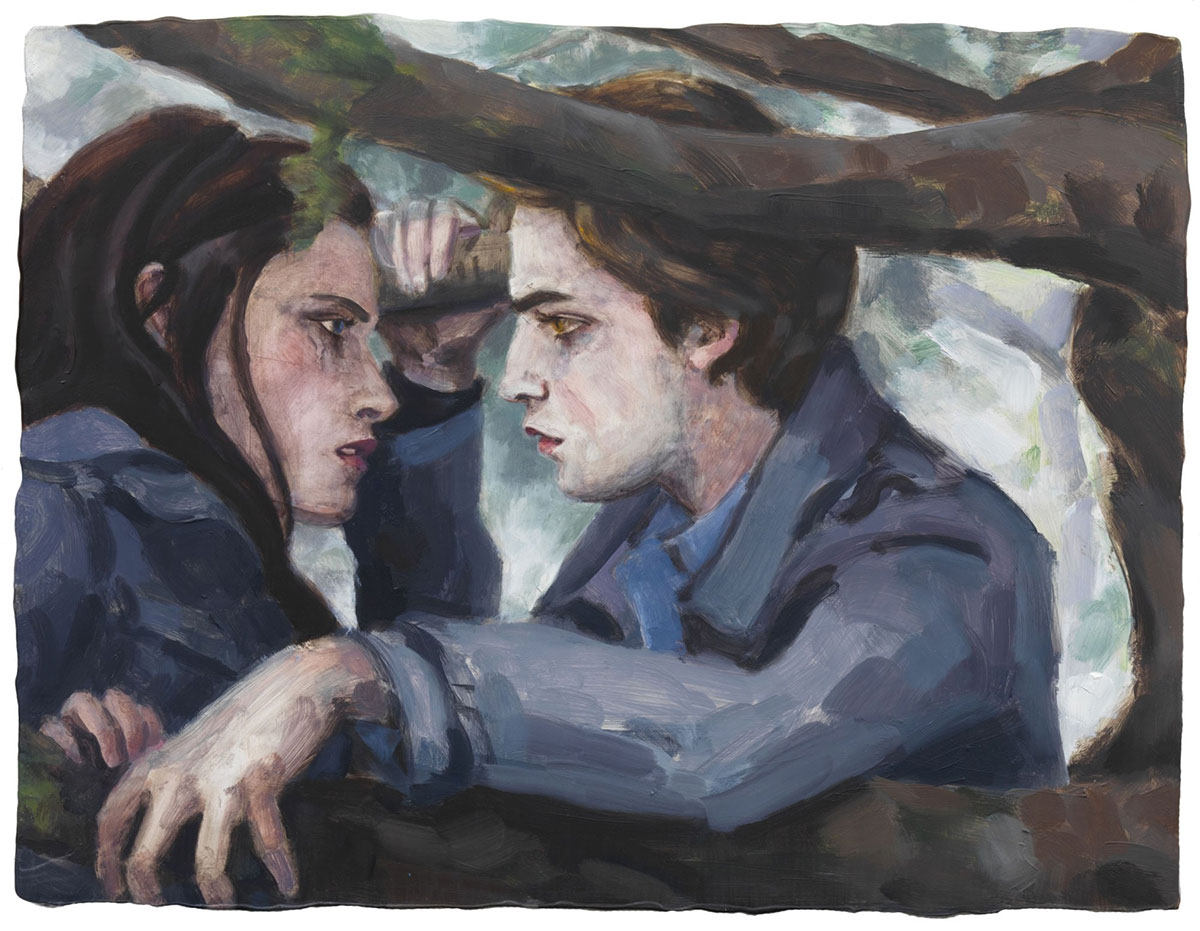 Elizabeth Peyton is best known for her intimate, small-scale portraits of celebrities, friends, and historical figures. Characterized by transparent washes of pigment and a jewel-tone palette, Peyton’s works address notions of idolatry and obsession. Payton pays special attention to their inner state and the very situation in which they are being portrayed.
Elizabeth Peyton is best known for her intimate, small-scale portraits of celebrities, friends, and historical figures. Characterized by transparent washes of pigment and a jewel-tone palette, Peyton’s works address notions of idolatry and obsession. Payton pays special attention to their inner state and the very situation in which they are being portrayed.
By Efi MIchalarou
Photo: Thaddaeus Ropac Gallery Archive
Elizabeth Peyton in her solo exhibition “transformer” presents new oil paintings on linen and board, as well as a selection of works on paper. Peyton’s repertoire of subjects ranges from fellow artists and friends to cultural and historical figures, including Klara Liden; Tyler, The Creator; Queen Elizabeth II; Angela Merkel; Dan Kjrer Nielsen; Jonas Kaufmann; David Bowie; and Yuzuru Hanyu. Her powerful brushwork, colorful palette, and elegantly austere compositions all serve to bring the viewer into the psychic terrain of both the figure portrayed and the artist observing them. At seventeen, Elizabeth Peyton moved to New York City to attend the School of Visual Arts (1983-87). By this time, her interest in making figurative paintings of particular personalities was well established, and often went hand in hand with her passion for reading. At college, for example, Peyton made drawings of Lucien de Rubempré from Balzac’s Lost Illusions. She saw parallels between this book – in which de Rubempré, a writer from the countryside, finds his way in Parisian society – and her own position in the New York art world. In other drawings and paintings, Peyton combined portraits of her friends (painted from photographs) with those of characters from her books. Unfortunately for the artist, these didn’t catch on. She has described her attempts to offer commissions while still at school as “a disaster”. Peyton struggled to establish herself as an artist after graduating in 1987 and has described these years as a difficult time in her life. Her interest in portraiture came at a time of little enthusiasm for figurative art, at least within the art world, but she nevertheless identified the importance of portraiture in the “real world” in which people enjoy making and looking at images of themselves and each other. For Peyton, this was an opportunity to explore an undervalued area in art. While some contemporaries were “horrified” by her unfashionable interest (her paintings were supposedly not “cynical” enough and placed too much emphasis on visual pleasure), others recognized the populist appeal of her work. In the early 1990s, Peyton met art dealer Gavin Brown, who championed the artist’s popular appeal. She was drawn to his “brutish” character, which she felt would prevent her work from becoming too “sweet,” and has spoken of their mutual respect and admiration. The two put on an exhibition in 1993, which included charcoal and ink drawings of Napoleon, Marie Antoinette, and Queen Elizabeth II. It was held in room 828 of the Chelsea Hotel in New York, to which viewers had to request the key at reception. Although fewer than fifty people saw the exhibition, it made the artist’s name. London gallerist Sadie Coles, who has represented Peyton in the UK since 1997, purchased the charcoal drawing of Napoleon. Peyton’s next exhibition, also with Brown, took place two years later. It was based on pop and rock icons and featured several images of the recently deceased singer Kurt Cobain. The exhibition received mixed reviews that set the tone for a debate as to whether or not Peyton, with her populist portraits, could be considered a serious artist. A third pivotal exhibition, Projects 60, took place in 1997 at MoMA and featured Peyton’s work alongside that of John Currin and Luc Tuymans. The literature surrounding this exhibition swung the debate, as it positioned Peyton as not just a traditional figurative painter and celebrity admirer, but an artist taking a critical view of and approach to contemporary portrait painting itself. As she became more established, many critics perceived a change in her style, with more confident line work and more of the canvas left blank (leaving behind the compulsion to fill the whole space). As well as paintings and drawings, Peyton began to make prints and to make use of new materials such as handmade papers and various colored inks. She has said of printmaking, “It’s a very free medium. Like painting was when I started, when no one was looking.” Furthermore, while her subject matter remained figurative, Peyton began to move away from fictional and historical figures, in favor of her own contemporaries. These included her friends and partners such as Maurizio Cattelan, Jonathan Horowitz, Piotr Uklański, and Rirkrit Tiravanija. Their images were reproduced in art and style magazines, where their “sharp-cheekboned, floppy-haired” aesthetic was in tune with the tastes of the time. Many of these contemporary subjects became famous in their own right – among them Rirkrit Tiravanija, an artist of interventions and happenings, whom Peyton married in 1991. Today Peyton’s work is known internationally, and she is particularly popular in the United States and United Kingdom. In 2003, her first self-portrait was selected for inclusion in the prestigious Whitney Biennial (of the following year) and appeared on the exhibition poster, marking her as a contemporary painter of note. In 2006 she was named as one of the 100 Most Influential New Yorkers by New York magazine, on account of having “brought portraiture into the 21st century”.
Photo: Elizabeth Peyton, Twilight, 2009, Oil on board, 21,5 x 30.5 cm, © Elizabeth Peyton, Courtesy the artist and Thaddaeus Ropac Gallery
Info: Thaddaeus Ropac Gallery, 7 Rue Debelleyme, Paris, France, Duration: 4/5-18/6/2022, Days & Hours: Tue-Sat 10:00-19:00, https://ropac.net/
